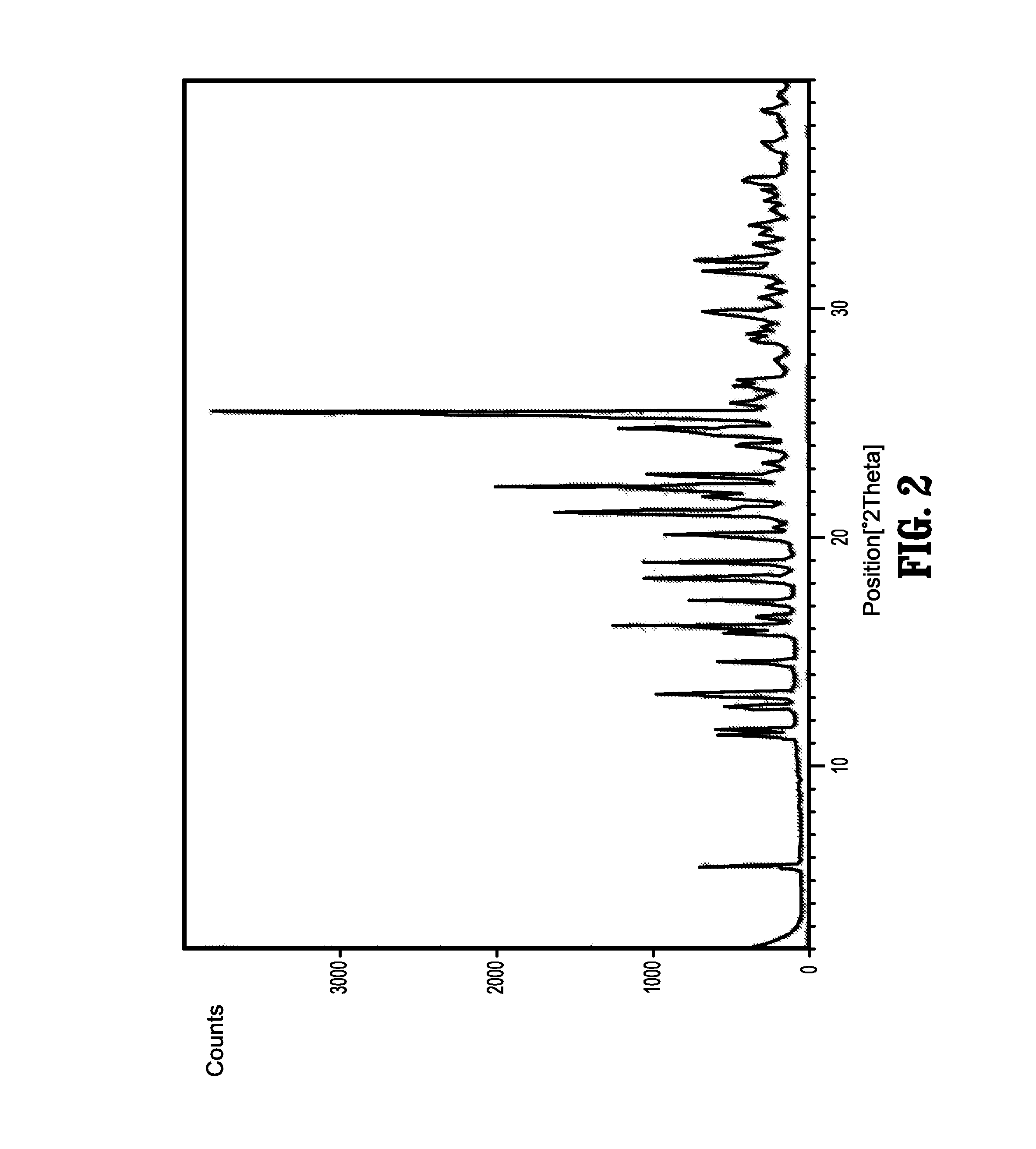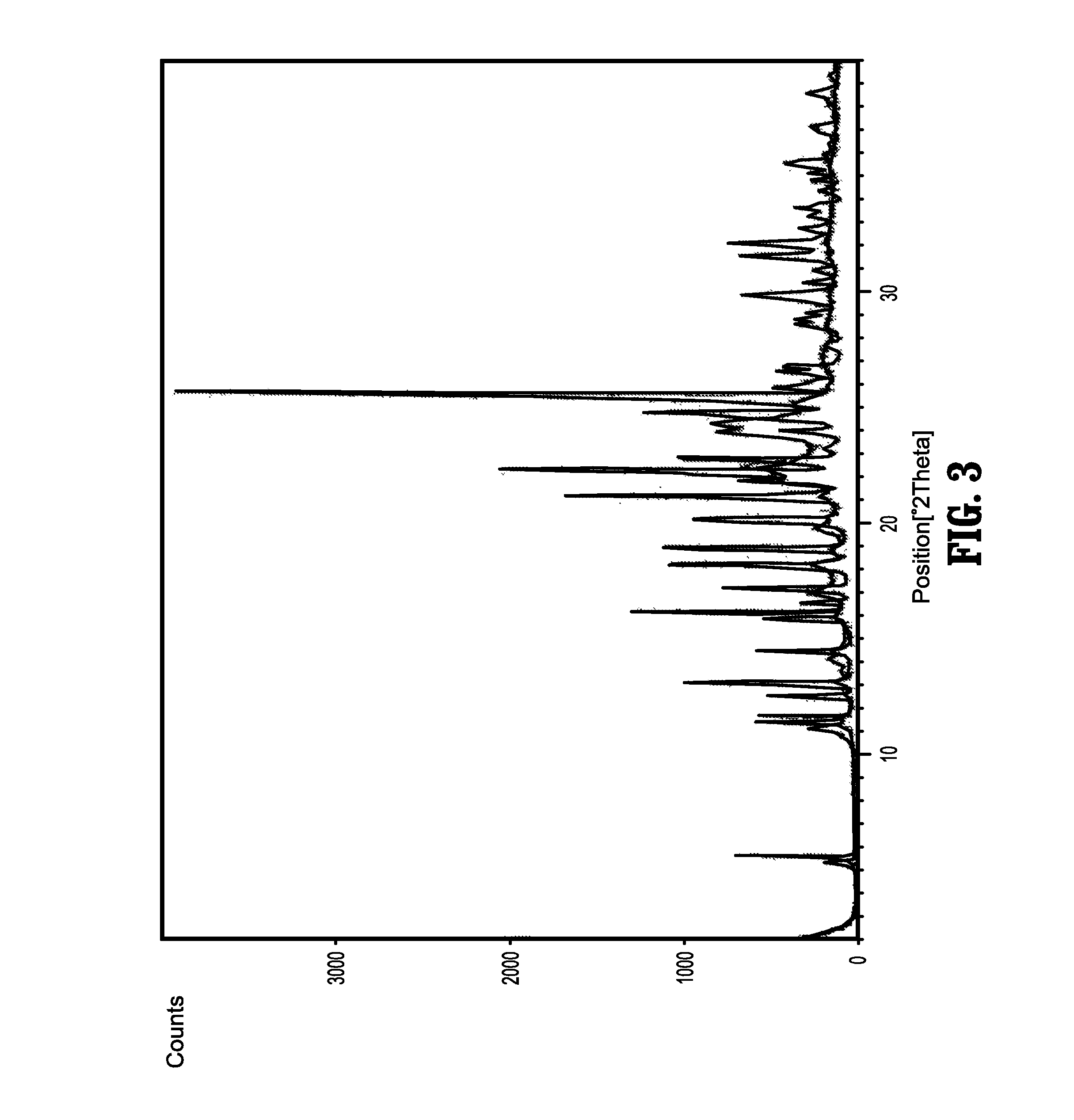Nebivolol and its Pharmaceutically Acceptable Salts, Process for Preparation and Pharmaceutical Compositions of Nebivolol
a technology of nebivolol and its pharmaceutically acceptable salts, which is applied in the field of preparation and pharmaceutical composition of nebivolol, can solve the problems of high blood pressure, high risk of more than 500 million people, and high risk of hypertension, and achieve the effect of cost and time-saving manufacturing
- Summary
- Abstract
- Description
- Claims
- Application Information
AI Technical Summary
Benefits of technology
Problems solved by technology
Method used
Image
Examples
example 1
Preparation of 6-fluoro-3,4-dihydro-2H-1-benzopyran-2-carboxylic acid piperidine amide (V)
[0127]120 ml of toluene and 0.8 ml of dimethyl formamide were added to 40 g of 6-fluoro-3,4-dihydro-2H-1-benzopyran-2-carboxylic acid (IV) under stirring at room temperature. Thionyl chloride (32 g) was added and the reaction mixture heated to 60-70° C. and maintained for 30 min. Thionyl chloride and toluene were distilled out under reduced pressure. To the reaction mixture, 160 ml of toluene was further added and cooled. To this, 88 ml of piperidine was slowly added at room temperature and stirred for 30 min. The reaction mixture was acidified using dilute HCl. The aqueous layer was extracted with toluene and the combined organic layers washed with dilute HCl followed by water. The organic solvent was removed under reduced pressure to obtain 40 g of the title compound as a solid.
[0128]Alternatively, the following procedure can as well be used. To 100 g of 6-fluoro-3,4-dihydro-2H-1-benzopyran-2...
example 2
Preparation of 6-fluoro-3,4-dihydro-2H-1-benzopyran-2-carboxaldehyde (VI)
[0129]To 40 g of amide (V) was added 400 ml of toluene. To it, vitride solution (mixture of 44 g vitride in toluene) was slowly added at 10 to 15° C. Methanol was added to the reaction mixture which was then acidified using dilute HCl. The reaction mixture was extracted with toluene and concentrated under reduced pressure to provide 26 g of the title compound.
example 3
Preparation of 6-fluoro-3,4-dihydro-2-oxiranyl-2H-1-benzopyran (VII)
[0130]To 234 ml of dimethyl sulfoxide was added 32 g of trimethyl sulfoxonium iodide. To it, potassium tertiary butoxide (16 g) was added and stirred for 1 h at 20-40° C. The reaction mixture was cooled and to it was added a solution of the compound obtained in Example 2 in dimethyl sulfoxide (26 ml.) while maintaining the temperature between 20°-40° C. for 1.5 hr. The reaction mixture was quenched in cold water. The aqueous layer was extracted with ethyl acetate, washed with water, concentrated under reduced pressure followed by product distillation to give 19.6 g of 6-fluoro-3,4-dihydro-2-oxiranyl-2H-1-benzopyran (VII) in the form of a mixture of A and B as an oil.
[0131]The mixture of isomer A (VII-A) and isomer B (VII-B) were separated by column chromatography using silica gel as the stationary phase and a mixture of hexane and ethyl acetate as eluant. 6.75 g of the mixture of isomers A and B was eluted with a mi...
PUM
| Property | Measurement | Unit |
|---|---|---|
| temperature | aaaaa | aaaaa |
| temperature | aaaaa | aaaaa |
| temperature | aaaaa | aaaaa |
Abstract
Description
Claims
Application Information
 Login to View More
Login to View More - R&D
- Intellectual Property
- Life Sciences
- Materials
- Tech Scout
- Unparalleled Data Quality
- Higher Quality Content
- 60% Fewer Hallucinations
Browse by: Latest US Patents, China's latest patents, Technical Efficacy Thesaurus, Application Domain, Technology Topic, Popular Technical Reports.
© 2025 PatSnap. All rights reserved.Legal|Privacy policy|Modern Slavery Act Transparency Statement|Sitemap|About US| Contact US: help@patsnap.com



